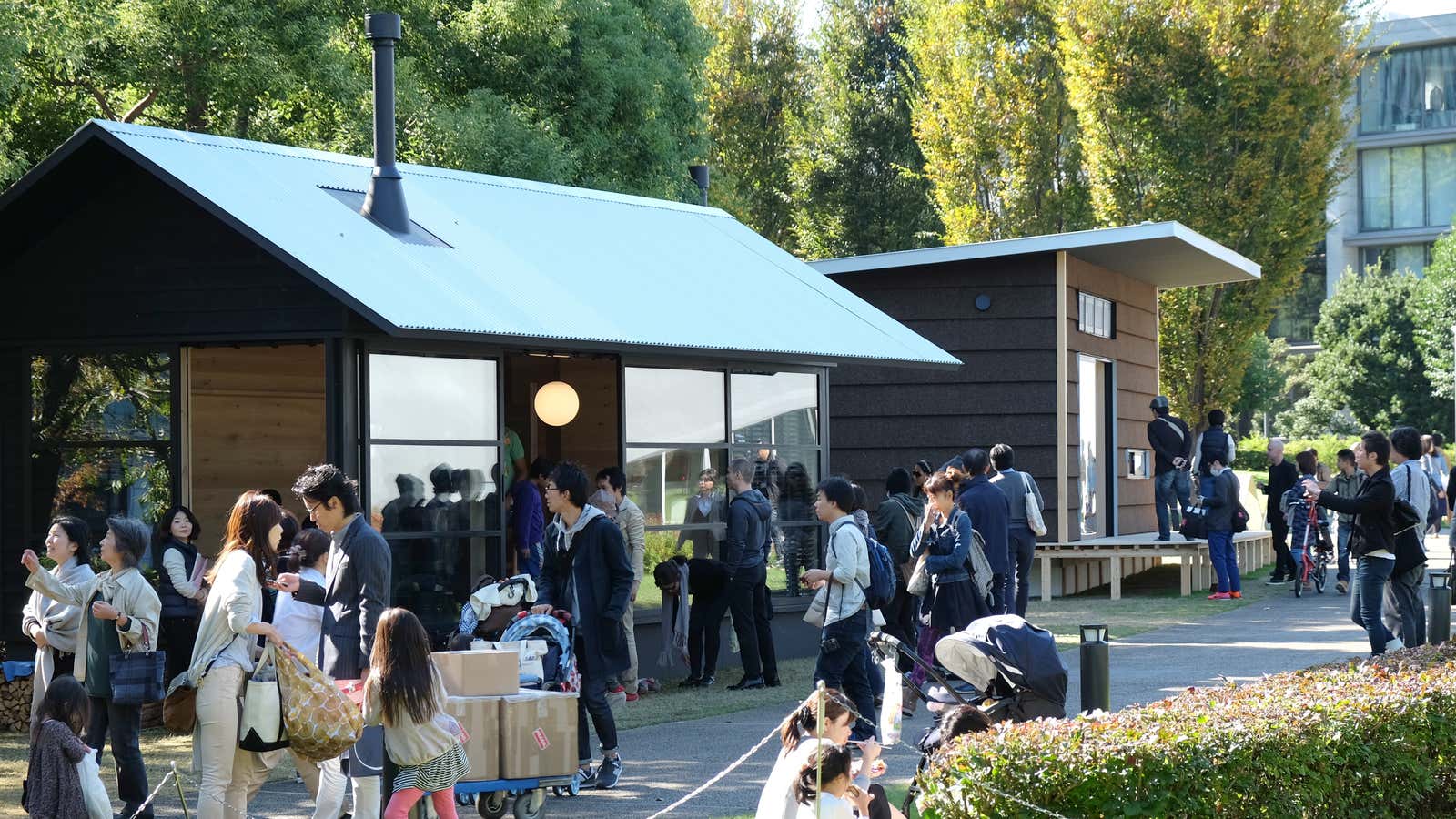Tokyo
Muji, the Japanese home goods and furniture brand, has built a cult following for its timeless product design, high quality, and absence of branding. While expanding its retail business globally, Muji also produces a line of prefab “Vertical Houses” in Japan. And this week in Tokyo, it previewed a new line called Muji Hut (link in Japanese) at a pop-up design event.
The big-picture idea behind the line: In Japanese cities, people have learned to live in a compact way. But on the weekend, it’s time to get outside, enjoy nature, and cozy up inside a cabin.
“We gather around the fireplace, enjoy each other’s company,” the exhibit’s welcome sign says. “Muji now invites you to slip away from the hustle and bustle of the city to a place where you can feel instantly at home and at ease.”
Muji showed three huts, ranging in size, complexity, and materials—cork, wood, and aluminum exteriors.
The largest is the cork hut, designed by Jasper Morrison, who has long collaborated with Muji. This featured cork exterior siding, a large main room with fireplace, a bathroom with shower, and a kitchen with stove.
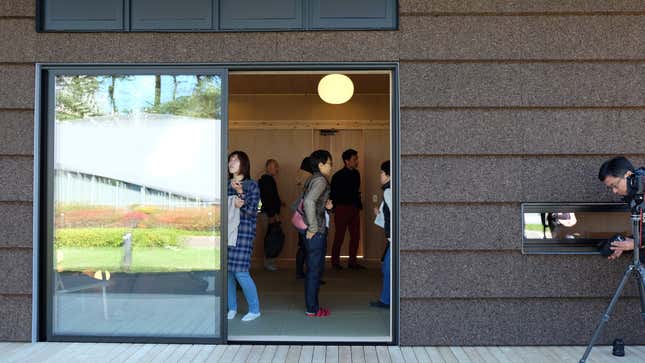
“Whenever I think about going to the country for the weekend, I start imagining a small house with everything needed for a short stay, a place to cook, a place to eat, a place to wash, and a place to sleep,” Morrison writes. “Then I start thinking about finding the right piece of land, not too far from an onsen, maybe near the sea, with a nice, small town somewhere nearby.”
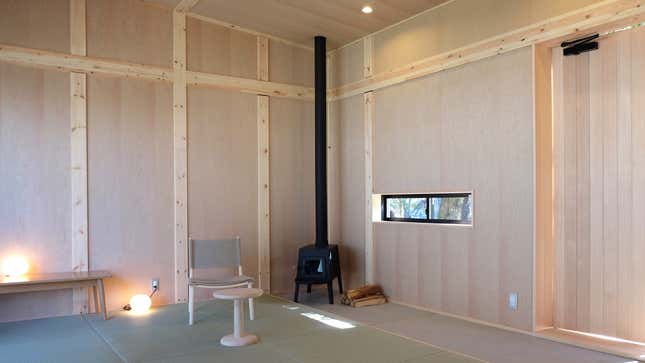
“The dream usually collapses when I think of the complexity of building a new house, but with this project I realized there was a chance to design such a house as a product rather than a one-off,” Morrison continues. “The complexities could be overcome not just for single situation, but as a solution for anyone who has the same wish for a small place in the country.”
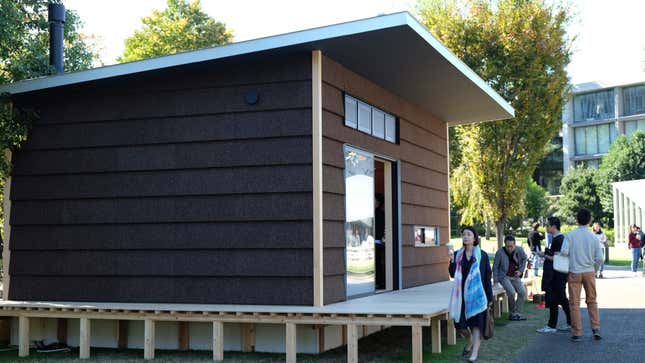
The second, mid-sized hut was lined in black wood with large, glass sliding doors.
Its designer, Naoto Fukasawa, is responsible for several iconic Muji products, including its wall-mounted CD player, and recently spoke with Quartz about what’s “just enough” in design.
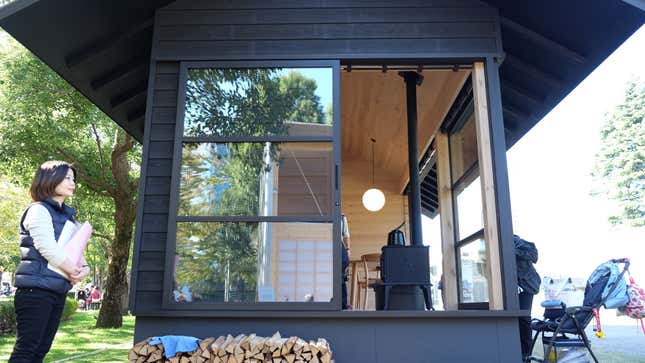
Inside: A small cot, fireplace, tiny bathroom with tub, and minimalist kitchen.
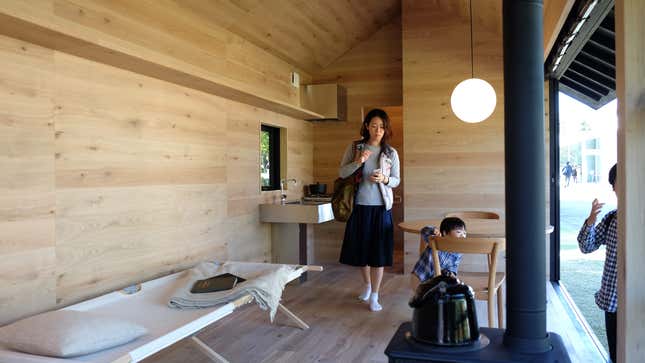
“There is a certain charm when you hear the word ‘hut’,” Fukasawa writes. “Not quite a holiday house, yet not as simple as going camping. If there is a small hut, there is a feeling that one could slip into nature anytime. I thought that living small in the smallest of structures is a Muji kind of living.”
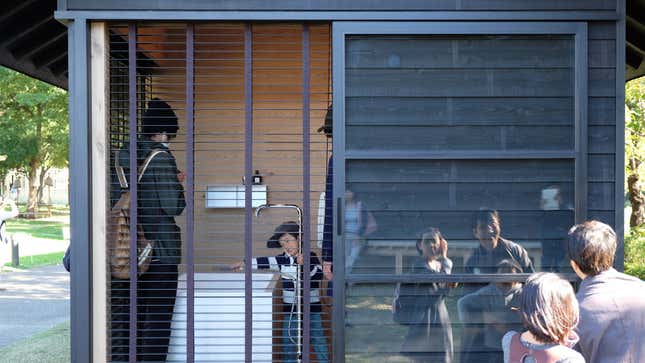
The third, smallest hut might as well have been an aluminum-and-wood tent. Created by furniture designer Konstantin Grcic, it features an interesting fold-up shell of sorts.
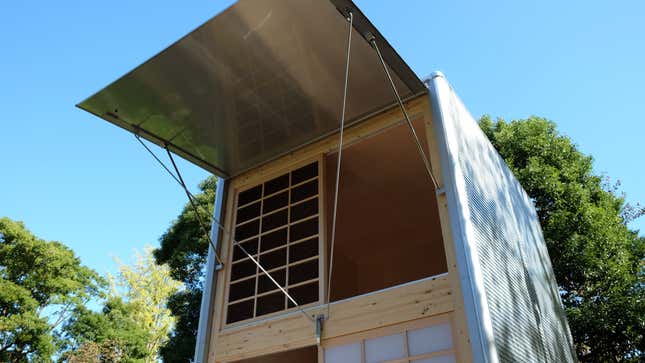
“My Muji hut represents an enclosed space which is small enough to stay within the norm of constructions which need no building permission in Japan,” Grcic writes. “Being a rigid and self-supportive structure it can be placed in any terrain and environment.”
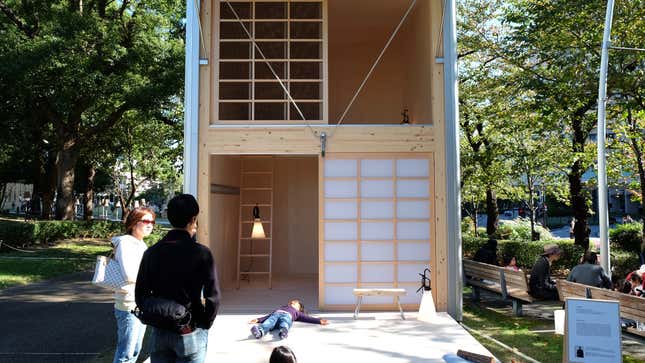
This hut offers basic living with no standard, built-in amenities—that is, no bathroom or kitchen. But there’s a second floor, accessible via ladder.
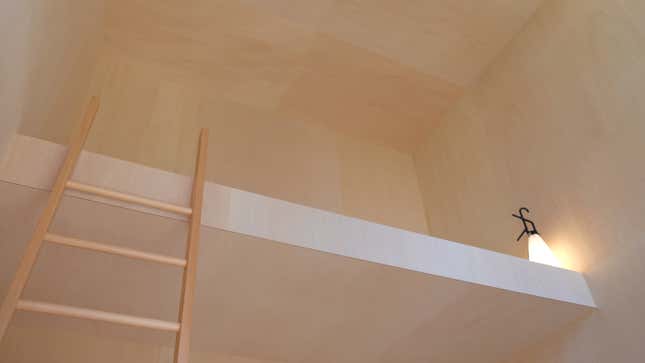
“The walls have an insulating foam core which is sandwiched in between a layer of aluminum on the outside, and plywood on the inside,” Grcic writes. “The panels are both structural and insulating.”
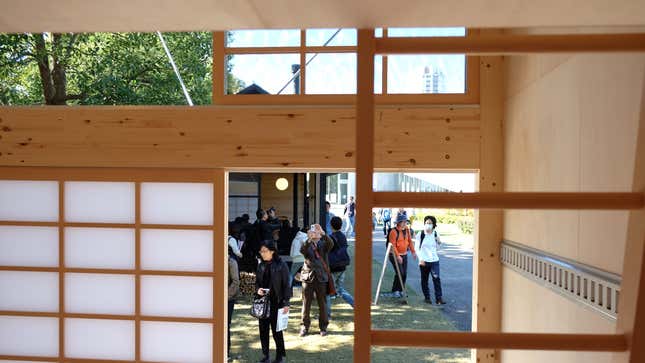
“In its simplest form it offers a free space, which can be personalized and accommodated for a number of different uses. Solution for anyone who has the same wish for a small place in the country.”
A Muji rep at the event said the huts would be available in Japan next year, but no prices were available.
